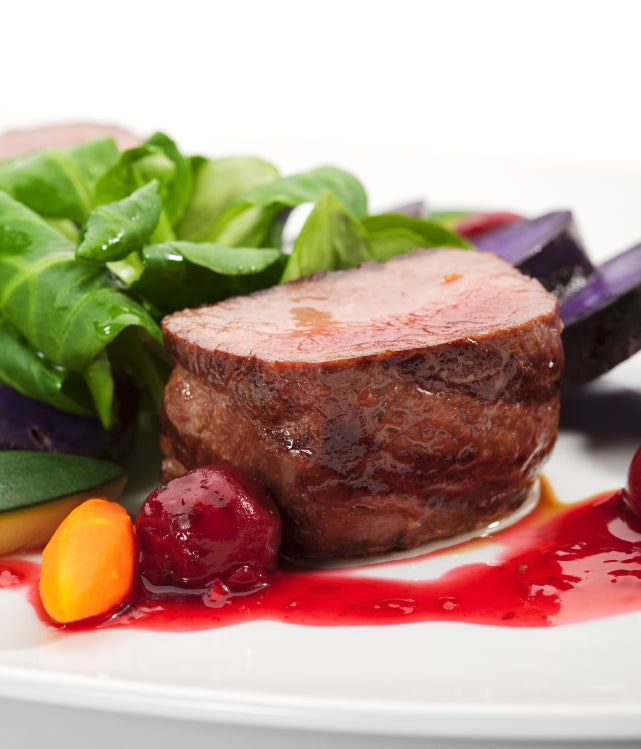
One of the first meals my husband-to-be ever made for me was a deer roast (followed closely by elk sloppy joes). I had never had venison before and was leery of anything acquired outside my trusty, sanitized grocery store meat department. But this boy I was dating had killed the deer himself and he was as anxious to impress me by cooking as I was to impress him by eating it.
I didn't tell him at the time, but I was shocked to Replace I liked it. And years later, I've learned that pretty much anything he brings home and puts over hot metal is going to be delicious. While I didn't know it at the time, deer is a fairly tricky meat to get right. Naturally very lean, a deer’s low fat content can make it drier than a nice, fatty steer. And because hunters prize large racks, most kills are older (read “tougher”) bucks.
On the hunting end, there are ways to ensure better-tasting venison. Young females are fattier and more tender. A quick kill minimizes the adrenaline in the muscles, which is largely responsible for the bitter, gamey taste of deer. And the longer the carcass sits in its skin before it’s cleaned and processed, the tougher it’s going to be. (Read here for more!)
Whether you’re looking for a wall trophy or a way to stock your freezer, there are a few ways to get the best culinary bang for your (ahem…) buck.
First, save the very best cuts for steaks. Backstrap (also known as “loin” or “tenderloin”) is considered the prime cut of venison. While it’s the most tender cut, venison steaks still require some tenderizing, like a marinade or a few quality minutes with a meat tenderizer. The second best cuts—usually the rump and the round (leg muscles just below the rump)—should be reserved for roasts.
Slow cooking in liquid, whether in a crock pot or covered in a roasting pan and cooked at low temperature, infuses venison with much-needed moisture and results in a tender, melt-in-your-mouth texture.
After roasts and steaks, the rest of the meat is—in my hunter-husband’s expert opinion—best put to use as summer sausage. Venison’s natural toughness makes deer jerky hard to chew, and ground venison (while yummy) can only be preserved frozen. Summer sausage is already cured, which makes it far longer-lasting than any raw cut in your freezer. Summer sausage also tends to mold, rather than spoil, minimizing the risk of eating contaminated meat. And, because it’s cured, it stays palatable and safe outside a refrigerator longer than other meats, making it a great choice for hiking, camping, and food storage.
My husband’s favorite preparation is fairly basic: cover a venison roast 2/3 of the way with beef broth in a crock pot, add a packet of onion soup mix and a tablespoon of Worcestershire sauce, and cook on low for 6 or 7 hours.
If you want to get more adventurous in the kitchen, you can check out
Hank Shaw’s fantastic gourmet site, honest-food.net. However you prepare it, venison can make an exciting variation to your food storage—and knowing how to prepare it can be a useful tool in your prepper skill set. Tell us about your favorite venison dish!

1 comment
Marty B
You can preserve ground venison by browning it and then pressure canning it. Unlike other cuts of meat, it must be cooked first. I cover my ground venison in the canning jar with beef broth before putting it in the canner.
This makes for wonderful last minute meals when friends drop by!